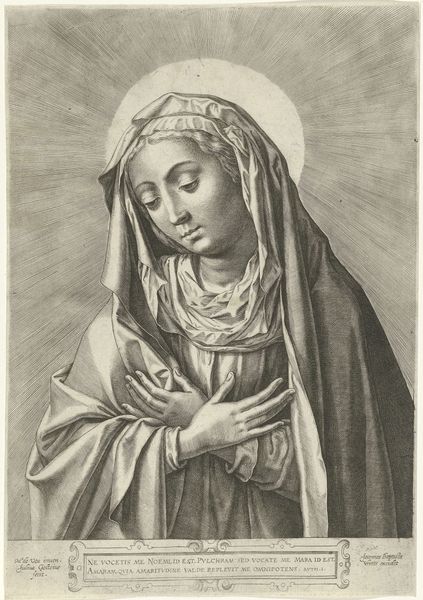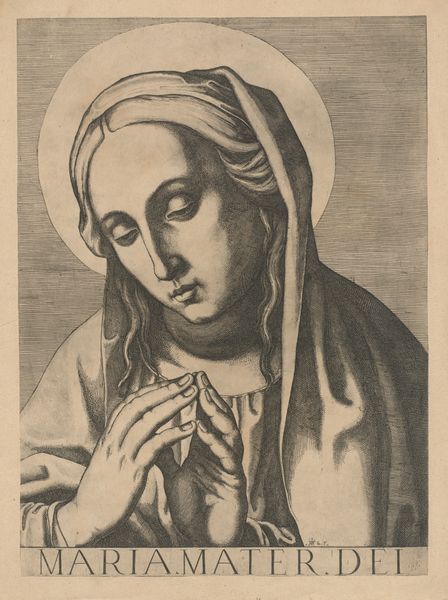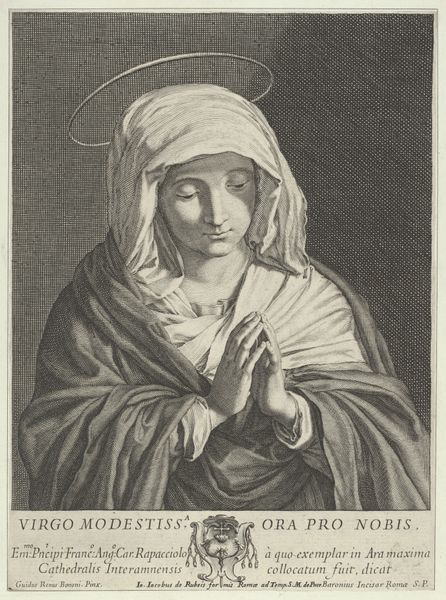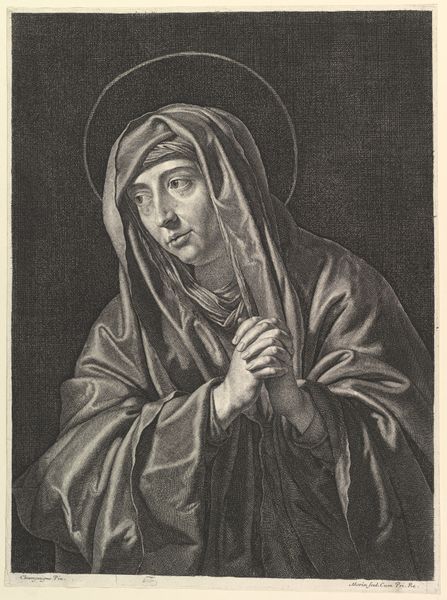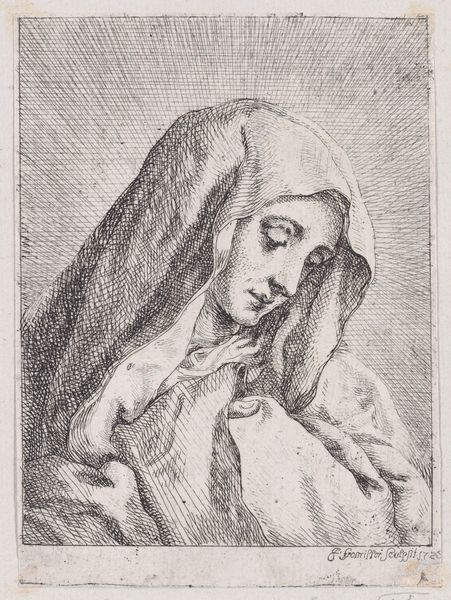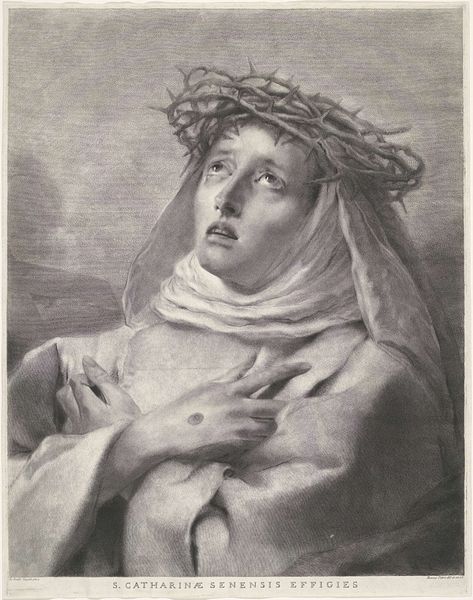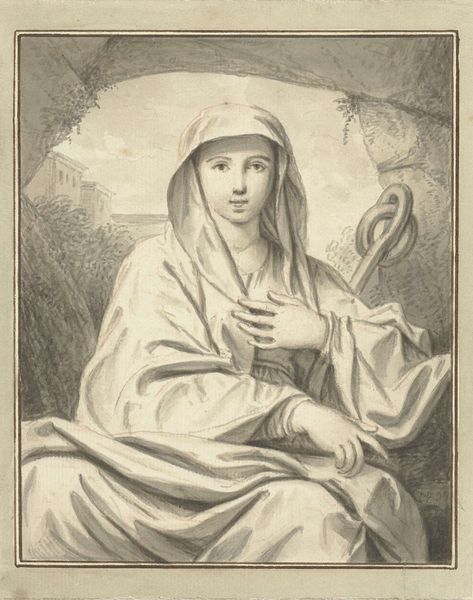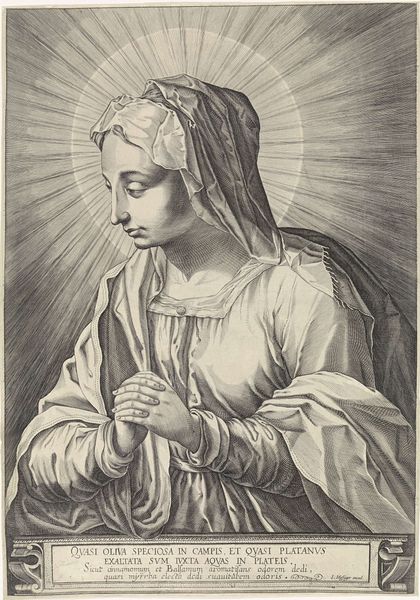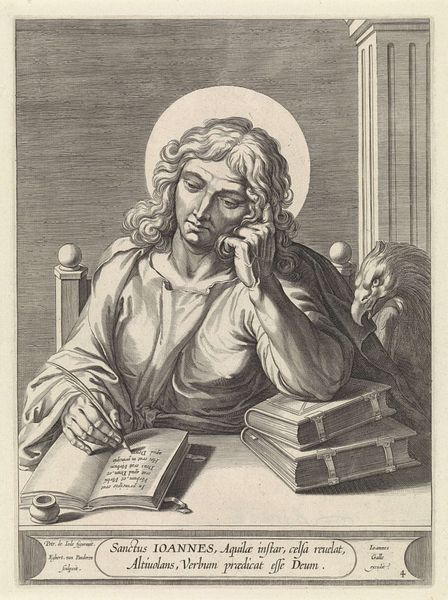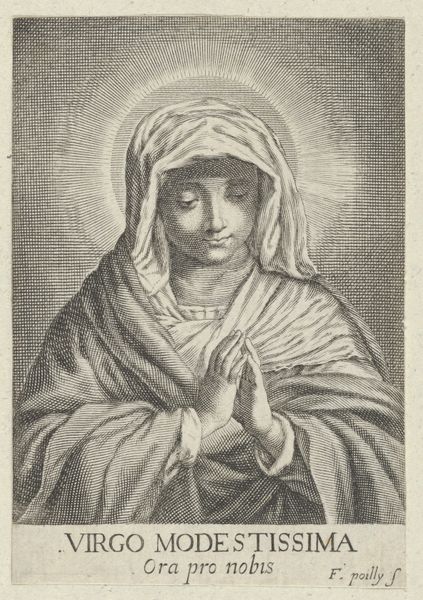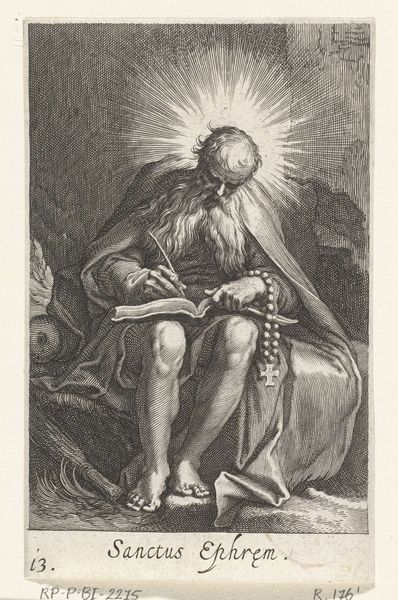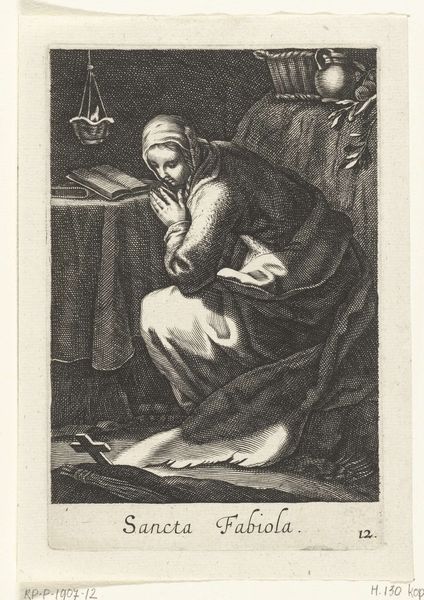
print, etching, engraving
#
portrait
#
baroque
# print
#
etching
#
history-painting
#
engraving
Dimensions: height 290 mm, width 218 mm
Copyright: Rijks Museum: Open Domain
Editor: Here we have Lucas Vorsterman I’s “Maria bij de passiewerktuigen,” made sometime between 1619 and 1675. It's a print consisting of engraving and etching. There's such a somber, heavy mood evoked by the figure and the objects surrounding her. What strikes you most about this piece? Curator: I’m immediately drawn to the tools of Christ’s passion laid out before Mary. Consider the materiality of each object – the harsh thorns, the cold metal of the chalice, the rough weave of the flagellum. What kind of labor went into making these instruments of torture and salvation? It highlights a specific socioeconomic system in place. Editor: That's a perspective I hadn't considered. How does understanding the materials deepen our understanding of the piece? Curator: Think about the distribution of the image itself – as a print, it would have been relatively affordable, and this widened audience access. Who consumed this image, and what purpose did it serve in their lives, within their communities, and also the economy? Were they meant for private devotion, or displayed in public spaces to inspire communal emotion and reflection on devotion and loss? Editor: So, it’s not just about the image itself but also about its life as an object after its creation. Did it reinforce or challenge societal hierarchies? Curator: Exactly! Even the act of creation, etching and engraving, are skilled labor. It’s not simply about the artistic vision but about the hands that made it and for whom it was intended to be sold. Consider the economy of suffering, both personal and religious, and its commodification during that era. Editor: This reframing of the artwork, from devotional image to a reflection of the social and economic landscape, gives it an unexpected new dimension. Curator: Precisely. Seeing art through this lens encourages us to explore its relationship to production, consumption, and the very fabric of society.
Comments
No comments
Be the first to comment and join the conversation on the ultimate creative platform.

